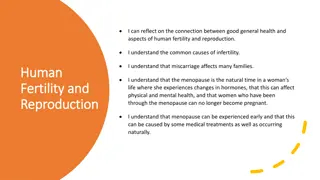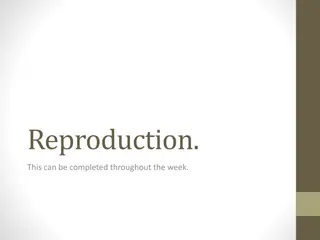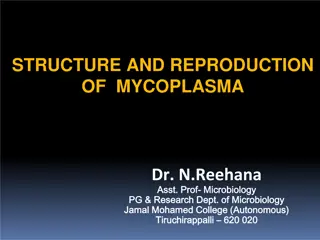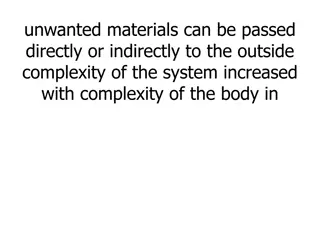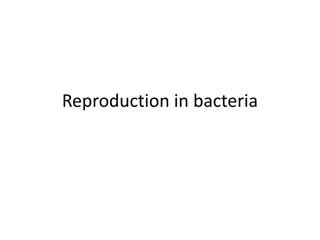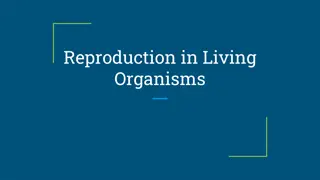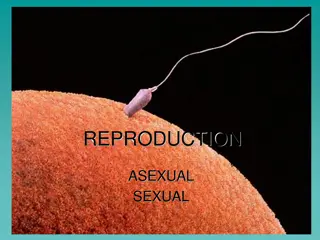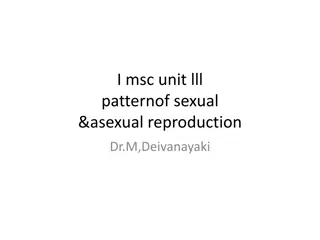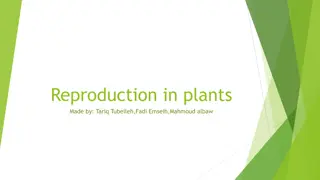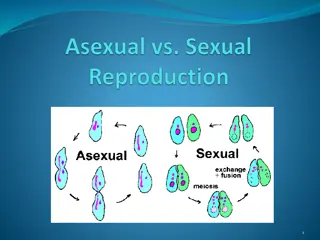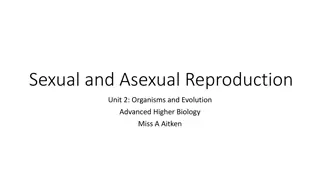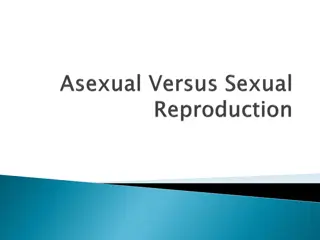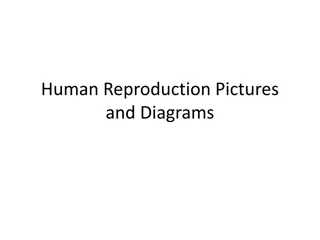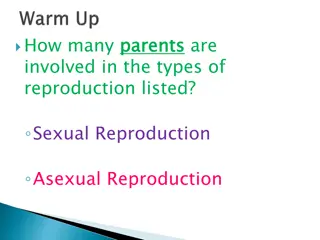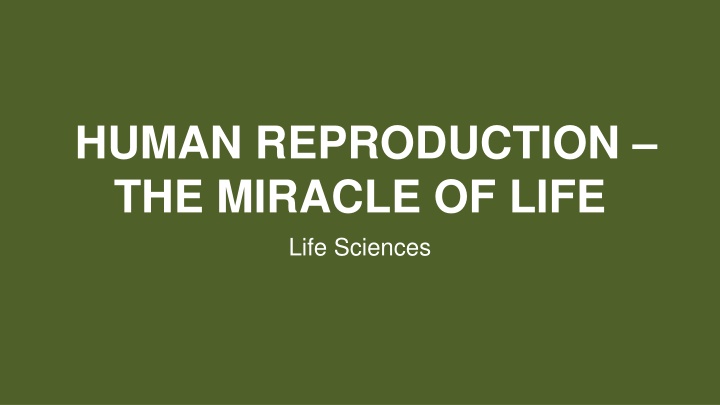
Life Sciences: Human Reproduction and Development Key Points
Explore the fascinating process of human reproduction and development in Life Sciences, covering topics such as fertilisation, zygote formation, embryo development, implantation, and the functions of structures like the chorion, amnion, and umbilical cord. Discover the stages of foetal development, from blastula to a 36-week foetus, along with the role of amniotic fluid in protecting and nurturing the growing foetus.
Download Presentation

Please find below an Image/Link to download the presentation.
The content on the website is provided AS IS for your information and personal use only. It may not be sold, licensed, or shared on other websites without obtaining consent from the author. If you encounter any issues during the download, it is possible that the publisher has removed the file from their server.
You are allowed to download the files provided on this website for personal or commercial use, subject to the condition that they are used lawfully. All files are the property of their respective owners.
The content on the website is provided AS IS for your information and personal use only. It may not be sold, licensed, or shared on other websites without obtaining consent from the author.
E N D
Presentation Transcript
HUMAN REPRODUCTION THE MIRACLE OF LIFE Life Sciences
Life Sciences Key Points: Human Reproduction Fertilisation Development of the Zygote Role of Oestrogen and Progesterone Diagram of a Developing Foetus Functions of Structures of the Developing Foetus
Life Sciences Fertilisation 23 Chromosomes + 23 Chromosomes = 46 Chromosomes in Zygote (2n)
Life Sciences Fertilisation When the nuclei of a sperm cell and an ovum combine. Each gamete contributes a set of chromosomes (n), the result is a zygote (2n).
Life Sciences Blastula and Blastocyst Embryo From Vectorstock.com
Life Sciences Implantation
Life Sciences Developing Foetus
Life Sciences What are the following? Chorion Chorionic villi Amnion Umbilical cord Placenta
Life Sciences Developing Foetus
Life Sciences What are the functions of the following? Chorion Chorionic villi Amnion Umbilical cord Placenta
Life Sciences Foetus at 20 Weeks
Life Sciences Foetus at 36 weeks
Life Sciences Amniotic Fluid
Life Sciences Functions of Amniotic Fluid Prevents dehydration Protects the foetus against physical injury, acting as a shock absorber. Prevents extreme temperature changes.
Life Sciences The Placenta
Life Sciences Functions of the Placenta Gases exchange between mother and foetus. Nutrients diffuse from mother s blood to foetus. Micro-filter to prevent viruses in mother s blood to enter the foetus. Allows antibodies from mother to foetus. Produces Progesterone.
Life Sciences The role of Oestrogen during Pregnancy Causes the uterus to grow. Triggers the development of the foetus organs. Stimulates the development of the placenta. Regulates other female hormones.
Life Sciences The role of Progesterone during Pregnancy Maintains the endometrium. Causes an increase in blood flow to the uterus. Prevents further ovulation during pregnancy.
Life Sciences Key Points: Human Reproduction Fertilisation Development of the Zygote Role of Oestrogen and Progesterone Diagram of a Developing Foetus Functions of Structures of the Developing Foetus

